When it comes to unique and delectable delicacies, bone marrow is an ingredient that has been enjoyed in various cuisines around the world for centuries. Rich in nutrients, bone marrow has become popular among modern food enthusiasts looking for new and distinct culinary experiences. However, for those who have not yet savored this delicious treat, one question often comes to mind: what does bone marrow taste like? Although it may seem bizarre to some, discovering bone marrow’s true essence and flavor can unlock a new world of culinary possibilities. In this article, we will delve into bone marrow’s taste, texture, and culinary applications, giving you a thorough understanding of what to expect when trying this enticing ingredient for the first time.
What is Bone Marrow?
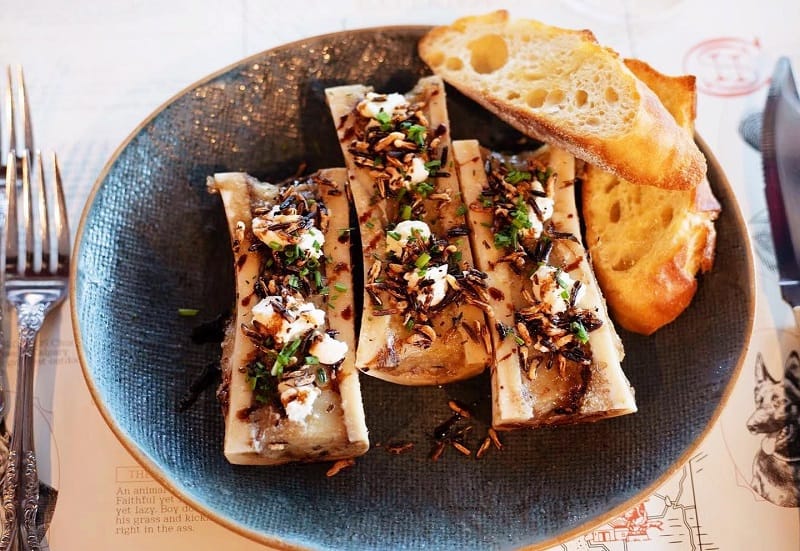
As someone who loves to cook and experiment in the kitchen, I’ve come across a lot of ingredients that have piqued my interest. One of those ingredients is bone marrow. At first glance, it might seem unappetizing or even gross, but bone marrow is a delicious and nutritious addition to many dishes. So, what exactly is bone marrow? Simply put, it’s the soft, fatty tissue found inside the bones of animals, typically cows and pigs. It might not sound very appetizing, but trust me, and it’s worth a try.
In cooking, bone marrow is often used as a flavoring agent, adding depth and richness to dishes. It’s commonly used in dishes like soups, stews, and sauces, where it can add a meaty, savory flavor.
One of my favorite ways to use bone marrow is in a simple beef broth. I’ll roast beef bones with some vegetables and herbs, then simmer them for hours to extract all the delicious flavor from the bones and marrow. The result is a rich, flavorful broth perfect for soups, stews, or just sipping.
But bone marrow isn’t just delicious. It’s also incredibly nutritious. It’s high in healthy fats, which can help improve brain function and reduce inflammation. It’s also a good source of vitamins and minerals, including iron, calcium, and phosphorus.
If you’re hesitant to try bone marrow, I understand. It can seem a bit intimidating at first. But trust me. It’s worth stepping outside your comfort zone for. Start by trying it in a dish without the star, like soup or stew. You might be surprised at how much you enjoy it.
What Does Bone Marrow Taste Like?
Bone marrow is a delightful delicacy with a unique and sought-after flavor. It has a rich, semi-sweet, slightly nutty taste with a creamy, buttery texture that melts in your mouth. It has an umami flavor, making it perfect for adding depth and complexity to the dishes. When cooked slowly and properly, the bone marrow becomes light and pliable, with a subtle and nutty taste that brings out the best in any recipe. Some describe it as the sophisticated version of rich, fatty, and silky beef fat, only better. Overall, there is no denying that bone marrow is a culinary treasure that deserves to be savored and enjoyed by all food lovers.
Does Bone Marrow Have An Umami Taste?
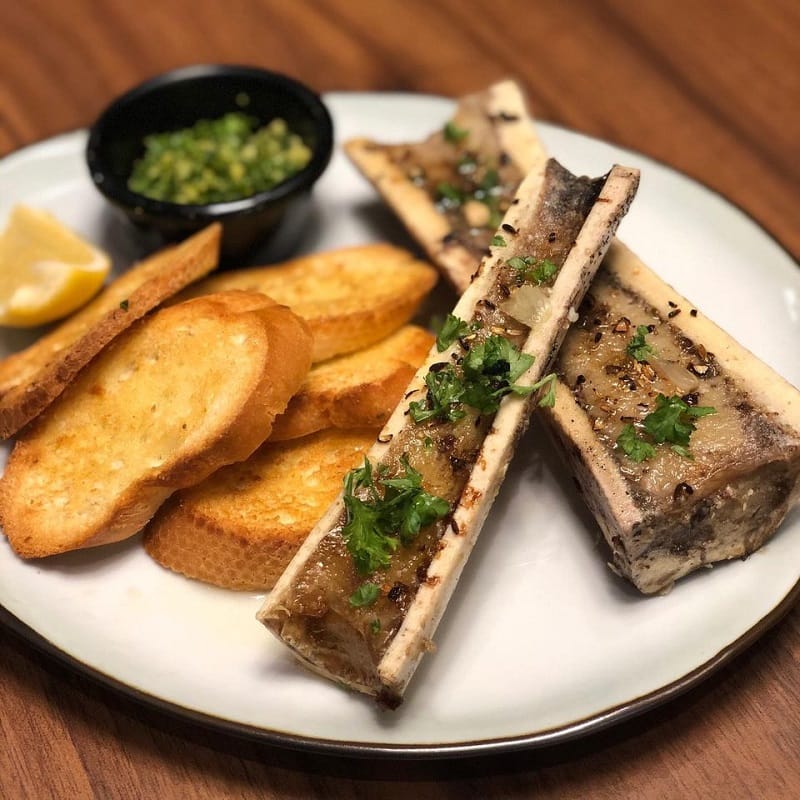
I have always been curious about the flavors of different foods. Recently, I came across a question that piqued my interest: does bone marrow taste umami?
It is the fifth taste for those unfamiliar with umami, alongside sweet, sour, salty, and bitter. Umami is often described as a savory, meaty flavor in mushrooms, soy sauce, and aged cheeses.
To answer the question, I decided to do some research and experimentation. I started by roasting some bones in the oven to extract the marrow. Once the marrow was cooked, I tasted it on its own. Surprisingly, it had a distinct savory flavor, although it was not quite as strong as other umami-rich foods.
I tried it in a few different dishes to better understand bone marrow’s taste. I added it to a beef stew, a risotto, and a pasta sauce. The bone marrow added a subtle richness to these dishes, complementing the other flavors. It was not overpowering, but it added a noticeable depth of flavor.
After my experimentation, I can confidently say that bone marrow does have an umami taste. While it may not be as strong as other umami-rich foods, it adds a savory depth to dishes that cannot be achieved with other ingredients.
For those curious about trying bone marrow, I recommend roasting it and trying it on its own first. From there, you can experiment with adding it to different dishes to see how it enhances the flavors.
What Is The Texture Of Bone Marrow Like, And How Does It Affect The Taste?
What is the texture of bone marrow like? Well, it can vary depending on the type of bone and the animal it comes from. Generally, it has a smooth and creamy texture, often described as buttery. It’s also quite rich and fatty.
So, how does the texture of bone marrow affect its taste? Texture plays a huge role in how we perceive taste, and bone marrow is no exception. Its creamy texture allows it to spread easily on bread or crackers, making it a popular ingredient in appetizers. And its richness adds depth and complexity to dishes, making them more flavorful.
But, the texture of bone marrow can also affect how it’s prepared and cooked. For example, if it’s too soft, it may be difficult to extract from the bone without it turning to mush. On the other hand, if it’s too hard, it may require a longer cooking time to soften up.
Does Bone Marrow Taste Like Butter?
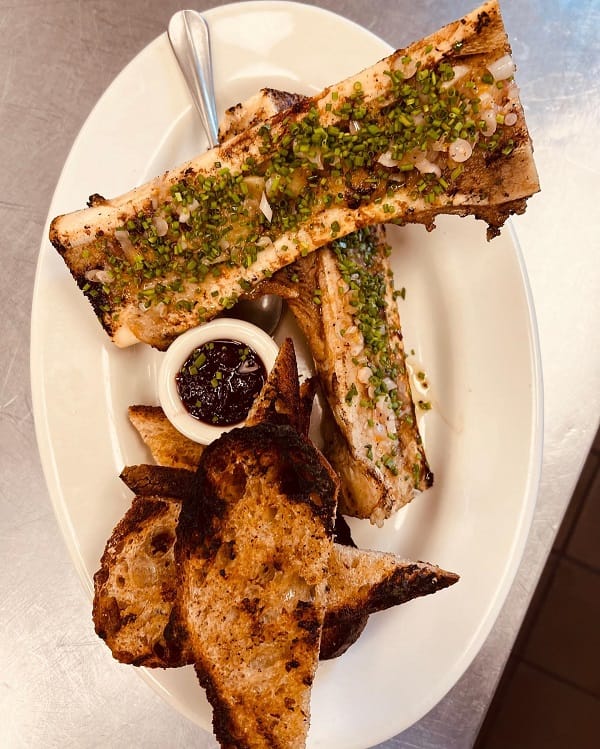
Bone marrow is often described as having a rich buttery flavor. Many people have compared the taste of bone marrow to butter, with hints of beef or chicken. When cooked properly, bone marrow has a soft and creamy texture that melts in your mouth. Its high-fat content gives it a slick and slightly gelatinous texture that adds to its richness.
Despite having a strong flavor, bone marrow has a subtle nuttiness and a touch of sweetness. It also contains umami, a savory flavor associated with meat and mushrooms. Overall, bone marrow can be an incredibly delicious and satisfying food that is both flavorful and nourishing.
Read more:
Nutritional Content Of Bone Marrow
Bone marrow is rich in vitamins and minerals, including calcium, phosphorus, magnesium, and iron. It is also high in beneficial fats, which can help improve heart health and brain function.
One of the most interesting things about bone marrow is its collagen content. Collagen is a protein that is essential for maintaining healthy skin, hair, and nails. It is also important for joint health, as it helps to cushion and protect the joints. Consuming bone marrow can help improve your skin’s appearance and texture while reducing joint pain and stiffness.
Another benefit of bone marrow is its anti-inflammatory properties. Inflammation is a natural response of the immune system, but chronic inflammation can lead to a number of health issues, including heart disease, diabetes, and cancer. Consuming foods high in anti-inflammatory compounds like bone marrow can help reduce inflammation and protect against these diseases.
So how can you incorporate bone marrow into your diet? One of the easiest ways is to make bone broth. Simmer bones (preferably from grass-fed or pasture-raised animals) in water for several hours until the bones break down and release their nutrients into the broth. The broth is rich in minerals, collagen, and other beneficial compounds. You can drink it as is or use it as a base for soups and stews.
Another way to consume bone marrow is to roast bone marrow in the oven. Place the bones on a baking sheet and roast at 450 degrees Fahrenheit for about 20 minutes until the marrow is soft and spreadable. You can scoop the marrow out with a spoon, spread it on toast or crackers, or use it as a flavorful addition to sauces and gravies.
Is Bone Marrow Healthy?
Bone marrow is a highly nutritious food offering various health benefits. Its fat tissue contains a hormone called adiponectin which helps break down fats in the body and maintain insulin. Additionally, bone marrow is high in collagen, the body’s most abundant protein, and is believed to lessen joint pain when supplemented.
Bone marrow is also necessary for human life as it produces healthy cells crucial for the proper functioning of the body. Studies show that it is far richer in vitamins and minerals than muscle meat, making it a nutrient-dense food that can rev up any meal. Furthermore, research has shown that it can reduce inflammation, repair the stomach lining, and help restore gut health. With all these benefits, it is clear that bone marrow is healthy and worth incorporating into one’s diet.
Can Bone Marrow Make You Sick?
Bone marrow is a highly nutritious and delicious food that can be used in various ways in cooking. However, it is not immune to contamination and may cause foodborne illness if improperly handled. It is essential to ensure that the bone marrow is not contaminated by unhygienic handling before eating it.
Cooking bone marrow kills bacteria but may not kill the toxins produced by some bacteria that can make one sick. Therefore, correctly handling and cooking the bone marrow is crucial to avoid negative consequences. Enjoying bone marrow in moderation and with proper care can provide numerous health benefits and enhance the taste of various dishes.
What Should You Look For When Buying Bone Marrow?
When it comes to buying bone marrow, there are a few things that you should consider to ensure that you are getting a quality product. Here are some tips that I have learned through my own experiences buying bone marrow:
Look for grass-fed, pasture-raised animals: Grass-fed, pasture-raised animals tend to have higher-quality bones and marrow. This is because they have a more diverse diet and are able to move around more freely, which can lead to stronger and healthier bones. When the animals are treated well, you can be sure that the marrow you buy is good quality.
Check the source of the bone marrow: It’s essential to know where your bone marrow is coming from. Ideally, you want to buy from a local source that you trust. This can be a farmer’s market or a butcher you know and trust. If you can’t find a local source, buy from a reputable online seller.
Consider the packaging: Ensure it is properly packaged when buying bone marrow. Look for bone marrow that is vacuum-sealed or frozen. This will ensure the bone marrow stays fresh and doesn’t spoil during transport.
Check the price: Bone marrow can be expensive but worth the investment. However, you don’t want to overpay for it. Do some research and compare prices to make sure that you are getting a fair deal.
Read reviews: Before buying bone marrow, read reviews from other customers. This will give you an idea of the product’s quality and the seller’s customer service. Look for reviews that mention the bone marrow’s taste, texture, and overall quality.
How To Cook Bone Marrow?
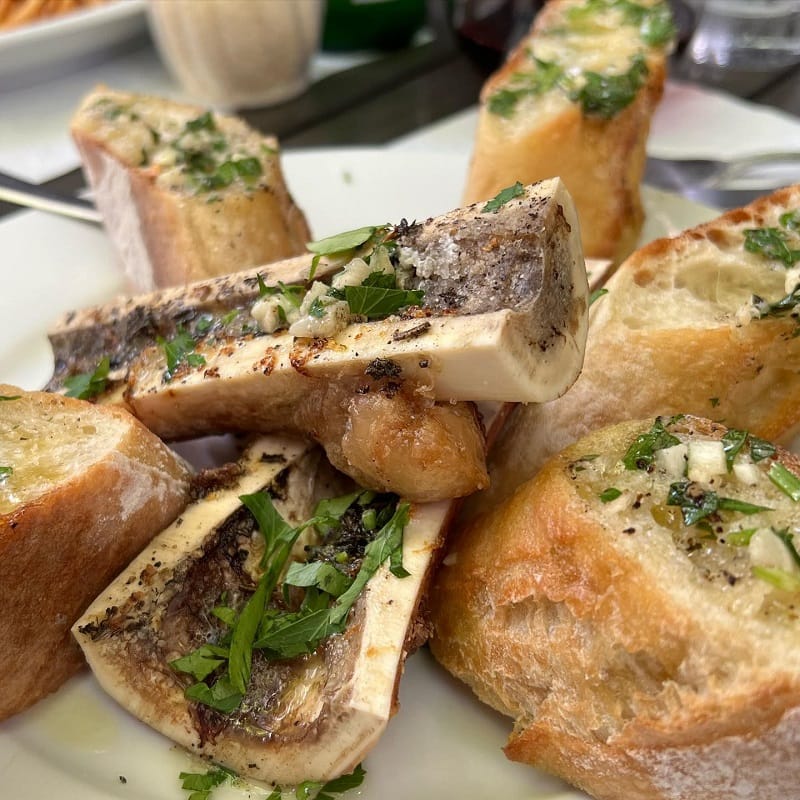
Now, I want to share my favorite recipe for cooking bone marrow. This dish may seem intimidating and fancy, but trust me, and it’s quite easy to make.
First things first, let’s talk about the ingredients you’ll need.
You’ll need the following:
- 2-2.5 pounds of beef or veal marrow bones, cut either lengthwise or crosswise into 2-inch segments.
- You’ll also need some salt and pepper to taste.
- Suppose you want to pair your bone marrow with a light salad. In that case, you’ll need 1 cup of arugula, ¼ cup of fresh parsley leaves, 1 shallot peeled and thinly sliced, 1 tsp of champagne vinegar, 1 tbsp of extra virgin olive oil, 1 tbsp of freshly squeezed lemon juice, and some freshly cracked black pepper and sea salt.
- And of course, don’t forget the crusty bread!
Now, let’s get to the instructions.
- Preheat your oven to 450°F (232°C).
- Season your marrow bones with salt and pepper.
- Place the seasoned bone marrow side on a baking sheet tray or an ovenproof skillet. Roast the bones for 15 to 25 minutes, depending on their size, until the marrow bubbles.
- After 15 minutes, check the bones. The marrow should have a soft, jelly-like consistency but not be completely liquid. The marrow will liquefy and seep from the bones if it’s overcooked.
- While your bones are roasting, you can prepare your salad. In a large bowl, combine the arugula, parsley, and shallot. Whisk together the champagne vinegar, olive oil, lemon juice, black pepper, and sea salt in a small bowl. Drizzle the dressing over the salad and toss to combine.
- Once your bones are finished roasting, remove them from the oven and let them cool for a few minutes. Serve the bone marrow immediately with the salad and toasted crusty bread. Scoop the marrow from the bones with a small spoon and spread it on the bread. Enjoy!
Notes:
- Ask for bones cut from the center of the leg bone. This area tends to have a higher ratio of marrow to bone, which means more deliciousness.
- Decide whether you want the bones cut lengthwise or crosswise. I find lengthwise to be the easiest for serving and enjoying, but it’s all a matter of preference. Just make sure to let your butcher know.
- Look for the freshest bones possible. The bones should not have meat, and the marrow should be white-pinkish. If the bones have a strong odor, that’s a sign that they’re not fresh and should be avoided.
- Don’t be afraid to buy extra bones to freeze for later. Bone marrow freezes well and can be stored in the freezer for months. Just make sure to thaw it properly before using it.
- Finally, remember that roasted marrow bones are a treat, not an everyday food. Enjoy them in moderation and savor every delicious bite.
Cooking bone marrow may seem intimidating, but it’s quite simple. Plus, it’s a unique and delicious way to switch up your usual dinner routine.
How To Eat Bone Marrow
To do this, you’ll need a small spoon or a knife. Scoop out the marrow and spread it on bread or toast. You can also eat the marrow on its own if you prefer.
When you take your first bite of bone marrow, you’ll notice its rich, buttery flavor. It’s similar to eating butter or a rich sauce but has a unique texture. The marrow will melt in your mouth, leaving you satisfied and full.
Not only is bone marrow delicious, but it’s also great for your body. Eating bone marrow may initially seem intimidating, but it’s worth trying. With a bit of preparation and an open mind, you can enjoy this unique food’s delicious and nutritious benefits.
Are There Any Spices Or Seasonings That Pair Particularly Well With Bone Marrow?
After experimentation, I discovered a few key spices that pair well with bone marrow.
First and foremost, let’s talk about salt. Salt is a must when it comes to preparing bone marrow. It not only enhances the natural flavor of the marrow, but it also helps to balance out the richness of the dish. I recommend using flaky sea salt like Maldon for extra flavor and texture.
Next up, let’s talk about herbs. Fresh herbs like thyme, rosemary, and parsley can add a bright, herbaceous note to the dish. Chop some herbs and sprinkle them on the roasted bone marrow before serving.
I recommend using black or red pepper flakes for a bit of spice. Both add a subtle kick to the dish without overpowering the delicate flavor of the marrow.
Another spice that pairs well with bone marrow is nutmeg. A pinch of nutmeg can add a warm, slightly sweet flavor that complements the marrow’s richness.
Lastly, let’s talk about acid. A squeeze of fresh lemon juice or a drizzle of balsamic vinegar can cut through the dish’s richness and add a bright, tangy flavor.
What Are Some Common Misconceptions About Bone Marrow As A Food?
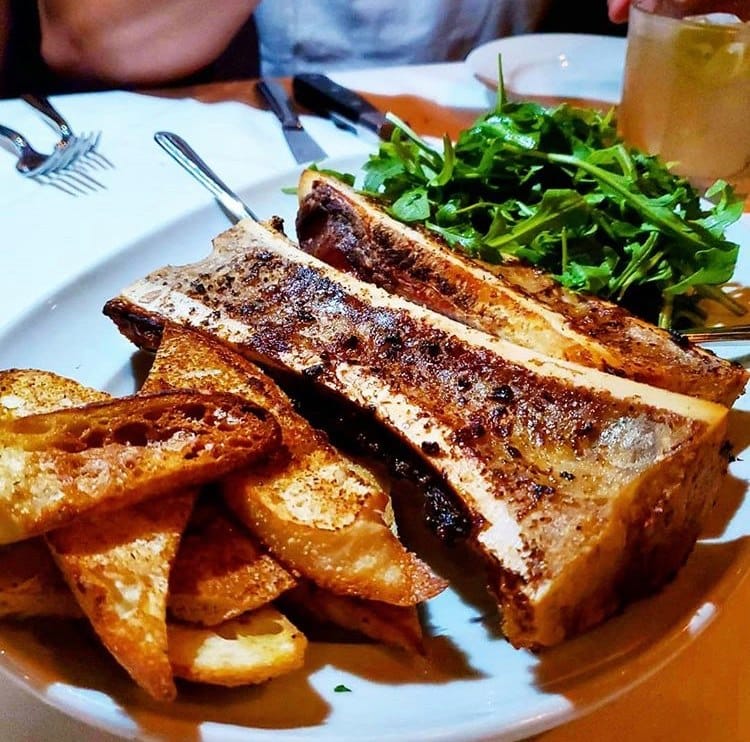
If you’re curious about incorporating bone marrow into your diet, it’s essential to know the facts before making any assumptions. Here are some common misconceptions about bone marrow as a food:
First and foremost, many believe that bone marrow is high in cholesterol and unhealthy. However, this couldn’t be further from the truth. Bone marrow is a good source of healthy fats for brain function, hormone production, and cellular health. The cholesterol in bone marrow is a precursor to many hormones in the body and is needed for optimal health.
Another common misconception is that bone marrow is only good for making broth or soup. While it’s true that bone marrow is an excellent addition to soups and broths, it can also be eaten as a nutrient-dense food. In traditional cultures, bone marrow was considered a delicacy and was often eaten raw or cooked with other foods.
Some people also believe that bone marrow is only meant for animals and is not fit for human consumption. However, humans have been consuming bone marrow for centuries, and it’s one of the most nutrient-dense foods available. It’s rich in vitamins and minerals like calcium, magnesium, phosphorus, and potassium, as well as collagen and gelatin, which are great for joint and skin health.
Lastly, some believe bone marrow is too expensive or hard to find. While it’s true that some sources of bone marrow can be pricey, there are affordable options available, such as buying bones from a local butcher or farmer’s market. Finding a good source may take a bit of effort, but the health benefits of bone marrow are well worth it.
FAQs About What Does Bone Marrow Taste Like
Is Bone Marrow Better Cooked Or Raw?
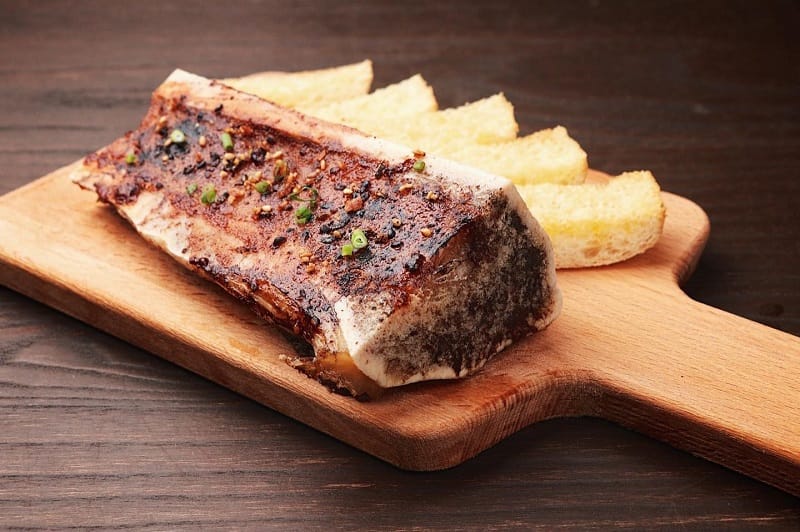
Bone marrow is a nutritious and delicious food that can be enjoyed either cooked or raw. When raw, the aroma is fresh and slightly sweet. However, when cooked, the aroma deepens considerably to that of roasted fatty beef. Some even consider raw bone marrow a delicacy, as it is highly enjoyable and creamy. Furthermore, it maintains insulin sensitivity and has been linked to a lower risk of diabetes, cardiovascular disease, and other obesity-associated cancers. Eating the marrow inside the bones is perfectly safe as long as the meat reaches a safe temperature.
Cooked bone marrow can be eaten straight out of the bone, spread on bread, or even used on tacos. It can also be simmered with vegetables to create a nutritious bone broth. In Chinese cooking, bone marrow is thought to support the chi and nourish the kidneys, making it a popular addition to rich soups. Overall, cooked and raw bone marrow provide various benefits and delicious flavor, making it a versatile addition to any meal.
Why Is Bone Marrow Considered To Have High-Fat Content?
Bone marrow is considered to have high-fat content because it mainly comprises 97% fat and less than 3% protein. Additionally, bone marrow is a great source of essential fatty acids and polyunsaturated fats, which are important for overall health. This high-fat content is why bone marrow is particularly useful in cooking and has gained popularity among food enthusiasts.
Despite its saturated fat content, it is still an excellent source of nutrients and vitamins, particularly vitamin B12. The fat tissue in bone marrow also contains a hormone called adiponectin, which helps break down fats and supports insulin maintenance. Bone marrow is also rich in collagen, which supports healthy joints, bones, and skin. Bone marrow is a nutrient-dense food that provides many health benefits and adds flavor to various dishes.
Is Bone Marrow Slimy?
Bone marrow is a beloved delicacy by many, but its slimy texture may turn some people off. However, this is completely normal as bone marrow is, in fact, slimy. It has a thick, sticky consistency that helps to cushion and lubricate the bones. Many people believe that the slime enhances the flavor of the beef marrow, which has a rich, buttery taste with hints of beef. When cooked, the overall taste and texture of the bone marrow improve, making it a popular addition to many dishes.
While bone marrow may not be for everyone due to its oily and slimy texture, it is a unique, flavorful ingredient that can add depth to any recipe.
Can you Freeze Bone Marrow?
To the factual, bone marrow can be frozen for up to 3 months in an airtight container with as much air removed as possible. Marrow bones can even be frozen for up to 6 months before roasting. It is also possible to freeze bone marrow out of the bone after it has been cooked. Use a spoon to remove the marrow, then store it in an appropriate container. Frozen bone marrow in 10% DMSO for optimal yields upon thawing is possible. If bone marrow is stored properly, it can be kept in the freezer for up to 12 months.
Conclusion
Overall, what does bone marrow taste like? It isn’t easy to describe, but it’s worth trying if you’re a fan of rich, savory flavors. Whether dining out at a fancy restaurant or cooking at home, bone marrow can add a unique twist to your culinary adventures.
References:
- https://www.healthline.com/nutrition/bone-marrow
- https://food52.com/blog/11685-how-and-why-to-use-bone-marrow
- https://food-hacks.wonderhowto.com/news/weird-ingredient-wednesday-bone-marrow-food-tastes-lot-better-than-sounds-0163250/
- https://my.clevelandclinic.org/health/body/22818-bone-marrow

Hey readers! Chip Holland here, and I’m a Manager of this website. My passion for writing about it only matches my passion for BBQ. Follow my blog for mouth-watering recipes, tips, and tricks for the perfect smoke, grill, and BBQ. I’m sure you won’t be disappointed!
